6.3 trillion US dollars. This is the estimated worldwide value of retail ecommerce sales predicted by analysts in 2024. Nope, it’s not a typo. Yes, it’s HUGE. Even more staggering, the figure is expected to climb higher over the coming years and hit almost 8 trillion by 2027.
What does this mean for sellers? Astronomical opportunities. Unfortunately, this also means astronomical competition - and this is why finding a niche is critical. If you want to leverage the incredible opportunities of ecommerce and succeed, getting specific (and we mean really specific) is key. Having a niche not only sets your ecommerce business apart from the competition but also helps you home in on your target audience and get them reaching for their wallets.
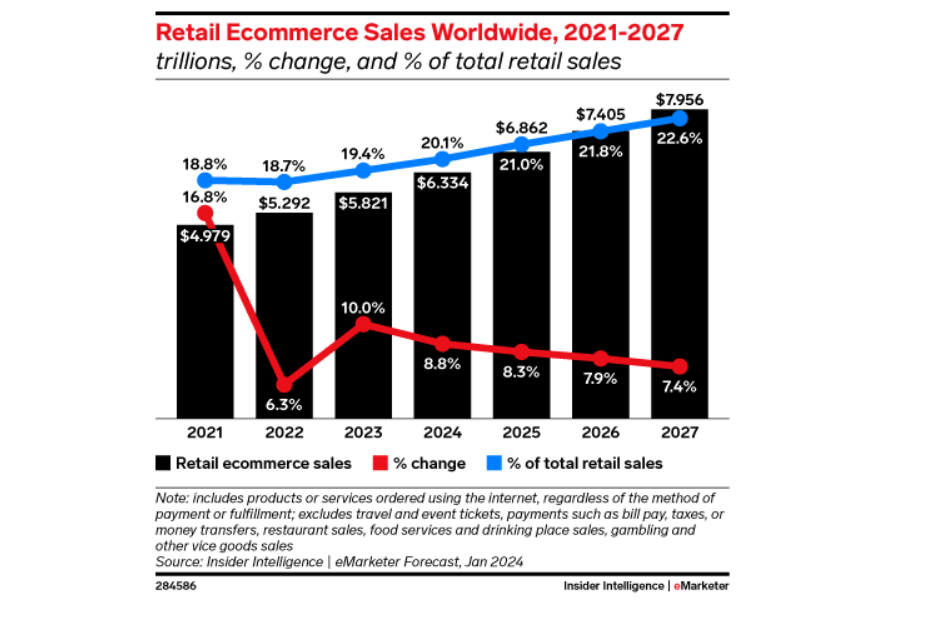
Ready to find your ecommerce niche and start selling?
Keep reading as we spotlight the top ecommerce niches of 2024 and what makes them so profitable. We’ve also included a heap of insider tips on how to build your business and turn a serious profit online. But first…
What is an Ecommerce Niche?
Let’s start by breaking down exactly what the term ‘ecommerce niche’ means. It sounds self-explanatory but there’s a bit more to it than you might think.
Ecommerce refers to the method of selling products online.
Niche describes a segment of the general ecommerce market fueled by a group of consumers with unique interests or needs.
Long story short, an ecommerce niche is a well-defined corner of the online retail market fueled by a unique set of consumers. Instead of trying to target anyone and everyone, niche ecommerce businesses narrow down their audience, and offer a product that interests only a small percentage of consumers.
The product is usually highly specialized and not widely available. In other words, the business finds a gap in the market and fills it. This gives the business a better shot at standing out from the competition.
Now, narrowing down your audience and targeting only a small percentage of consumers might sound like a bad idea. But when you consider there are more than 8 billion people in the world, and more than 2.7 billion of them shop online, suddenly your ‘well-defined corner’ doesn’t seem so small.
For example, Ivy & Duke takes the concept of pet products – a hugely popular, profitable, and competitive market – one step further. Instead of simply selling pet accessories, a niche ecommerce business narrows down its target audience even further and sells luxury, handcrafted dog beds made in the UK. The target audience? Instead of pet owners in general, Ivy & Duke targets bougie dog lovers who want to support British businesses.
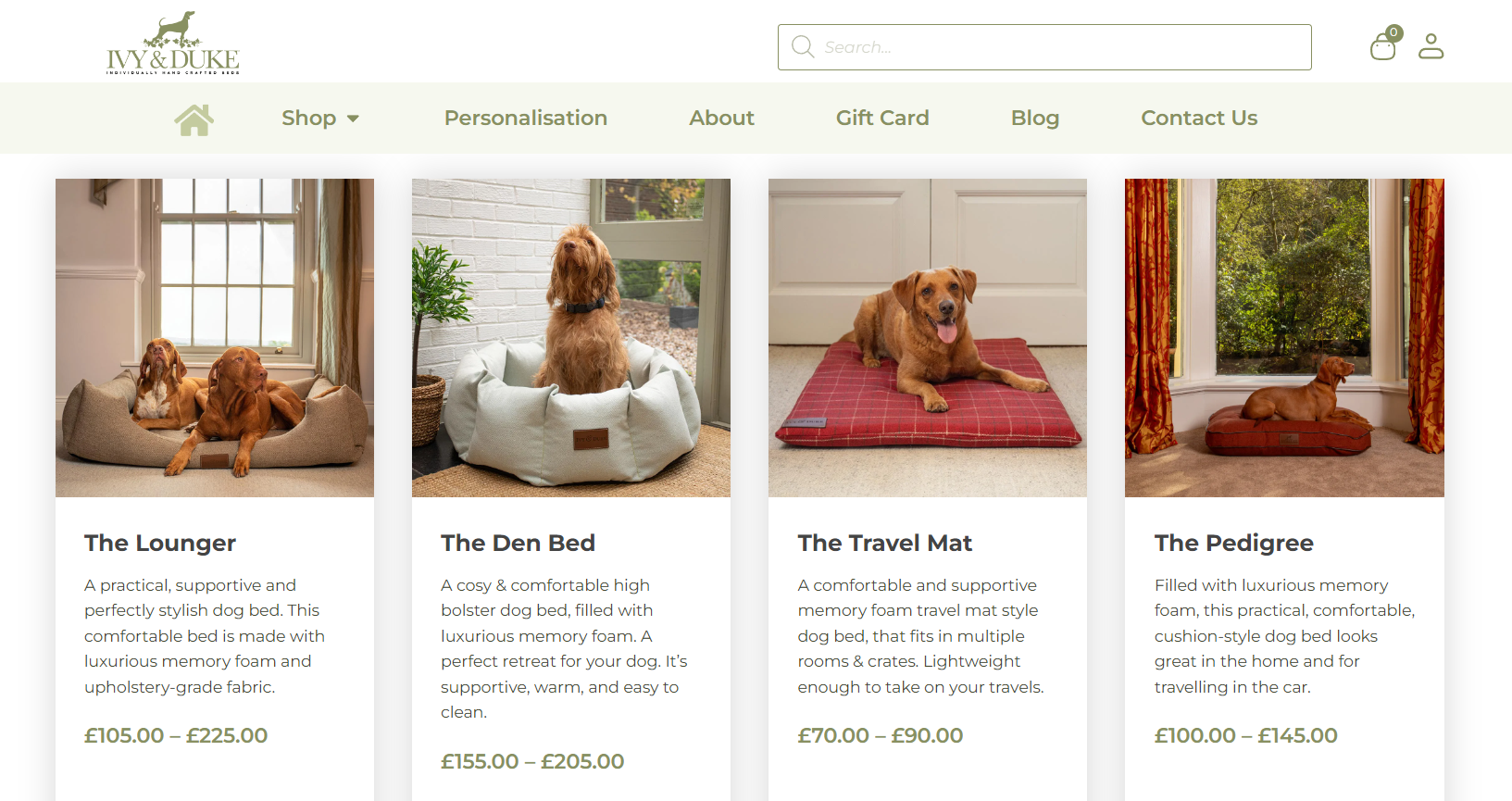
Here's another example: compact fitness equipment designed for small spaces. Instead of focusing on home fitness equipment, why not get niche and sell home fitness equipment designed with small spaces in mind? Again, the target audience is unique – home fitness enthusiasts who want to work out in small spaces.
In both examples, businesses can set themselves apart from larger, more generic competitors by focusing on a specific niche. This ultra-high level of specialization not only helps you find customers but also boosts satisfaction, as the products are tailored to meet their unique needs.
To quote Steve Jobs, a man who knows a thing or two about business:
“Do not try to do everything. Do one thing well.”
Why Your Ecommerce Business Needs a Niche
There’s no getting around it, most ecommerce markets are saturated. Yes, there’s a huge amount of demand out there – 2.7+ billion people to be precise. But with millions of ecommerce stores to compete with, including established brands and retailers that are household names, making your little ol’ enterprise stand out from the crowd can be a challenge, to say the least.
Unless you find a niche!
When you find a niche, you instantly differentiate yourself from the over-saturated wider market and all the struggling sellers that go with it. Sure, you eliminate a big percentage of customers. But at the same time, you spark the interest of a select few and draw them away from the competition. It’s these customers who will ultimately fuel your niche e-commerce business.
Here’s why it’s SO important to find your niche if you want your ecommerce business to truly stand out:
Less competition
Chances are, you’ve heard of dropshipping. If not, let us clarify. It’s an ecommerce model that outsources the procurement, storage, and shipping of products to a third party. It can be very profitable. It’s also extremely competitive. This is where having a niche comes in. Finding a niche is a clever way to avoid entering an already saturated market. Yes, it can be challenging to find a niche but ultimately, you can drastically improve the long-term success of your ecommerce business by narrowing down your market.
For instance, Shewee transformed outdoor and travel experiences for women with a portable female urination device. The innovative product has been going strong since 1999 and targets not just women but women who hike, camp, travel, paddle, attend festivals and enjoy other activities where traditional bathroom facilities aren’t available. Of course, the market for a travel-friendly accessory that allows women to urinate standing up is ridiculously niche, but that’s the whole point and is ultimately what led to the enormous success of Shewee.
Watch Lia Hatzakis review this product and see for yourself…
Track down your target audience
Having an ecommerce niche helps you connect with potential customers more easily. Chances are, there are already customers searching online for your niche product. Instead of attempting to appeal to a mass audience and spreading yourself too thin, a niche allows you to target customers with a genuine interest in your product.
Connect with your customers
Focusing on an ecommerce niche is a valuable opportunity to forge stronger connections with your customers. With a clearly defined niche you can develop a deep understanding of the needs of your customers, then use this to speak their language and build brand loyalty.
Maximise marketing spends
Marketing is one of the biggest expenses faced by businesses and having a niche product can drastically maximize your spend. Rather than attempt to appeal to the masses, an ecommerce niche gives you the direction you need to create strategic marketing campaigns. This highly targeted approach not only improves customer engagement but boosts conversion rates.
Sidestep inventory and storage headaches
Most ecommerce business owners simply don’t have the space or budget to acquire and store large amounts of products. This is especially true if your product requires special storage conditions like temperature or humidity-controlled areas, enhanced security systems, ongoing pest management, or cleanroom environments.
Choosing a niche instantly minimizes the storage and inventory management headaches associated with e-commerce businesses. Administration is also streamlined as you’re selling a small selection of highly specialized products, instead of dozens, or even hundreds of stock-keeping units (SKUs).
How to Create a Niche Ecommerce Business in 10 Simple Steps
By the end of 2024, analysts predict more than 20% of all retail purchases will take place online. By 2027 this number is expected to grow to 23%. This represents huge opportunities for online retailers. Want to get on board?
Here’s how to set up a niche ecommerce business in 10 simple steps:
1. Ride the coattails of the latest trends
Finding an ecommerce niche demands creativity but you don’t have to be completely original. Instead, consider piggybacking on profitable ecommerce trends with proven success. For example, the eco-friendly niche has become hugely popular, particularly in the face of issues like climate change.
Canadian-based company Tru Earth capitalized on this consumer mentality shift by transforming laundry detergent from a bulky liquid into convenient, eco-friendly laundry strips with minimal packaging. Their high-quality, ultra-concentrated strips include biodegradable ingredients that keep clothes fresh and clean, without the need for plastic packaging.
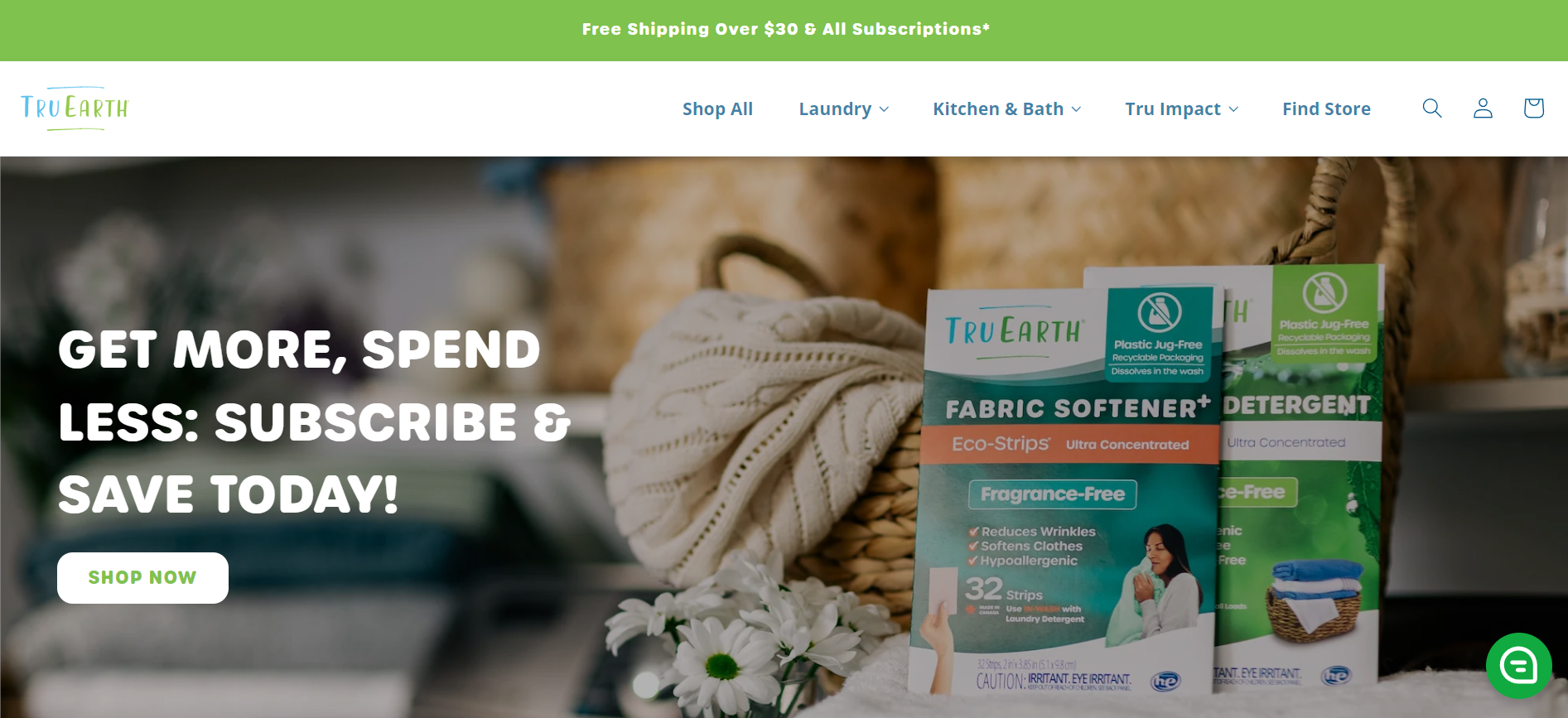
“In 2019, the market for eco-alternatives had gained traction and, in fact, some advisors told us that it was too competitive to break into and succeed, specifically the laundry detergent sector. But we knew we could do better and more importantly, we realized there was a better way. We were confident we could take the patented strip technology and help people make small lifestyle changes that helped save the planet. Also, we did our homework and research and discovered that consumers wanted earth-friendly cleaning solutions, but they needed to be easier to use,” says Brad Liski, Co-Founder, and CEO of Tru Earth.
Looking for inspiration for your niche product? Global ecommerce platform Amazon can be a great place to start. The Movers & Shakers section can be a goldmine when it comes to product research and showcases products that have seen the biggest increase in sales rank over the last 24 hours.
Here’s how to use this feature:
- Navigate to the Movers & Shakers page. This can be found under the ‘Best Sellers’ section on Amazon.
- Explore different categories. Browse different categories relevant to your general idea. This can be a good way to spot trends and fast-growing products.
- Identify patterns: Go deeper and ask yourself why certain types of products are trending. This can help you brainstorm ideas, understand market demand, and – ultimately – find a niche product that sells.
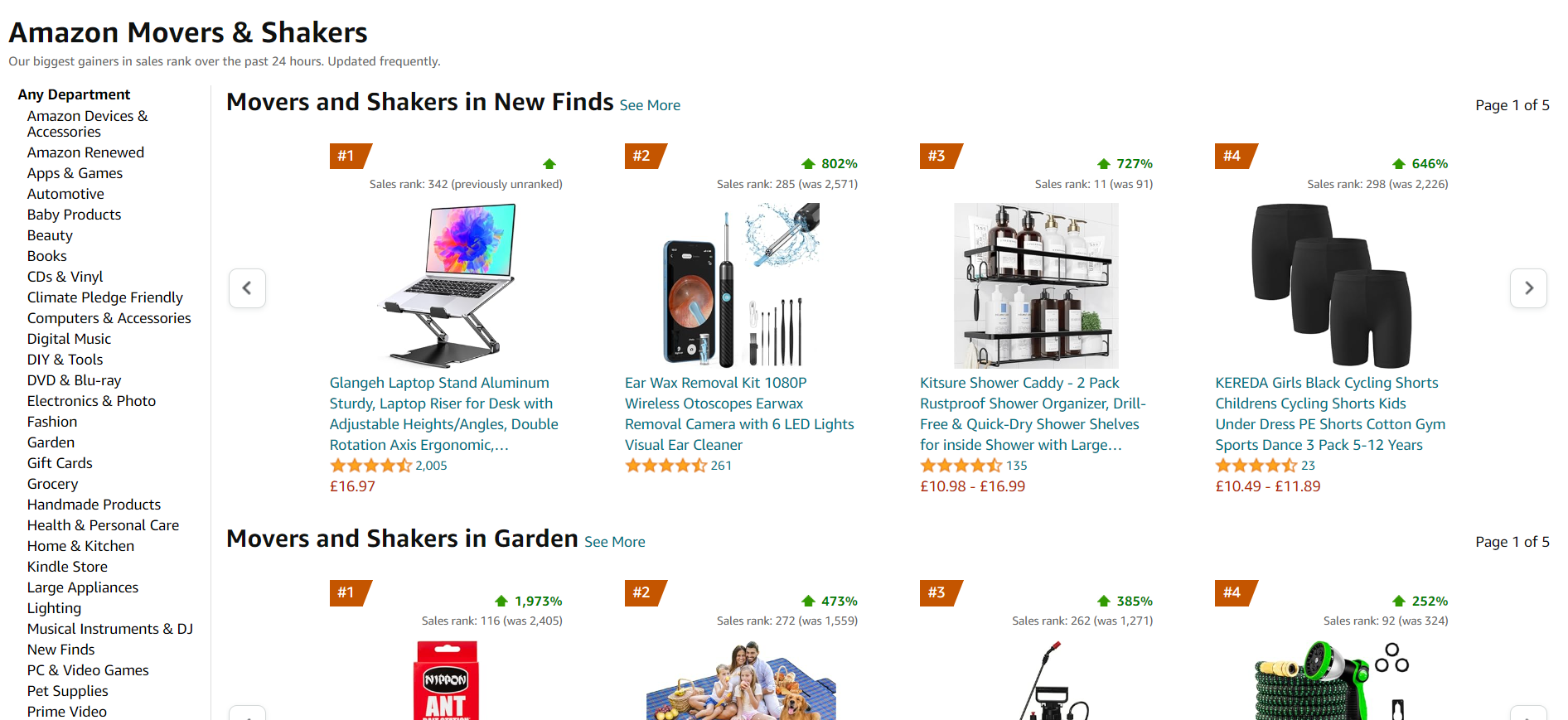
The Best Sellers section on Amazon is also a great resource. Researching the top-selling products across different categories can help you understand what products are currently popular. With this knowledge, you can potentially find gaps in the market.
Here’s how to use this feature:
- Navigate to the Best Sellers page. This is easy to find on Amazon's homepage.
- Browse categories: Give yourself permission to go down the Amazon rabbit hole to see which products are consistently topping the bestsellers list.
- Analyse reviews and features. As well as products, look at customer reviews to better understand what customers like and dislike about products. This information can be used to discover areas where you could make potential improvements or variations in your niche.
Finally, Amazon’s New Releases section is worth a look. It spotlights recently launched products that are gaining traction and can be a great way to spot new trends early. Here’s how to use this feature:
- Navigate to the New Releases page. Find it in the main menu under the Trending category.
- Monitor new products. Check the New Releases section to keep up with the latest trending products.
- Monitor market response. Pay attention to how quickly new products gain reviews and ratings. Products that quickly gain traction could be worth exploring more.
2. Embrace your interests
“When you’re curious, you find lots of interesting things to do.” - Walt Disney
Most people recognize the name Walt Disney, but what many people don’t know is that the iconic American company stemmed from one child’s passion for drawing. As a kid, Walt Disney loved to draw. At 18, he scored a job as a cartoonist and soon after founded his own business. Today, that business has a market capitalization value of more than $180 billion.
This is just one example, albeit an extreme one, that shows how a personal hobby can grow into a genuine business. Your interests serve as a natural launchpad for an ecommerce niche so think about what makes you tick and if there’s a potential market there.
3. Test your audience
Just because you think a product has potential doesn’t necessarily mean it does. Invest a good amount of time into market and product research to find out if there’s demand. This prevents you from investing time and resources into creating a product that might not sell.
- Conduct market research
- Analyse competitors
- Run test ads and marketing campaigns
- Create a Minimum Viable Product (MVP)
- Collect and analyze feedback
For example, the market for organic skincare products is sizeable, but is there a market of niche buyers looking for organic skincare products made with seaweed extracts? Is it worth getting even more niche and exploring organic skincare products made with seaweed extracts sustainably harvested in Scotland? Ask Scotsman and ishga co-founder Malcolm Macrae – the answer is a resounding YES.
These are the types of questions you need to ask yourself when searching for your niche. Yes, it’s important to establish a well-defined audience. However, getting too specific could limit your customer base and hinder growth.
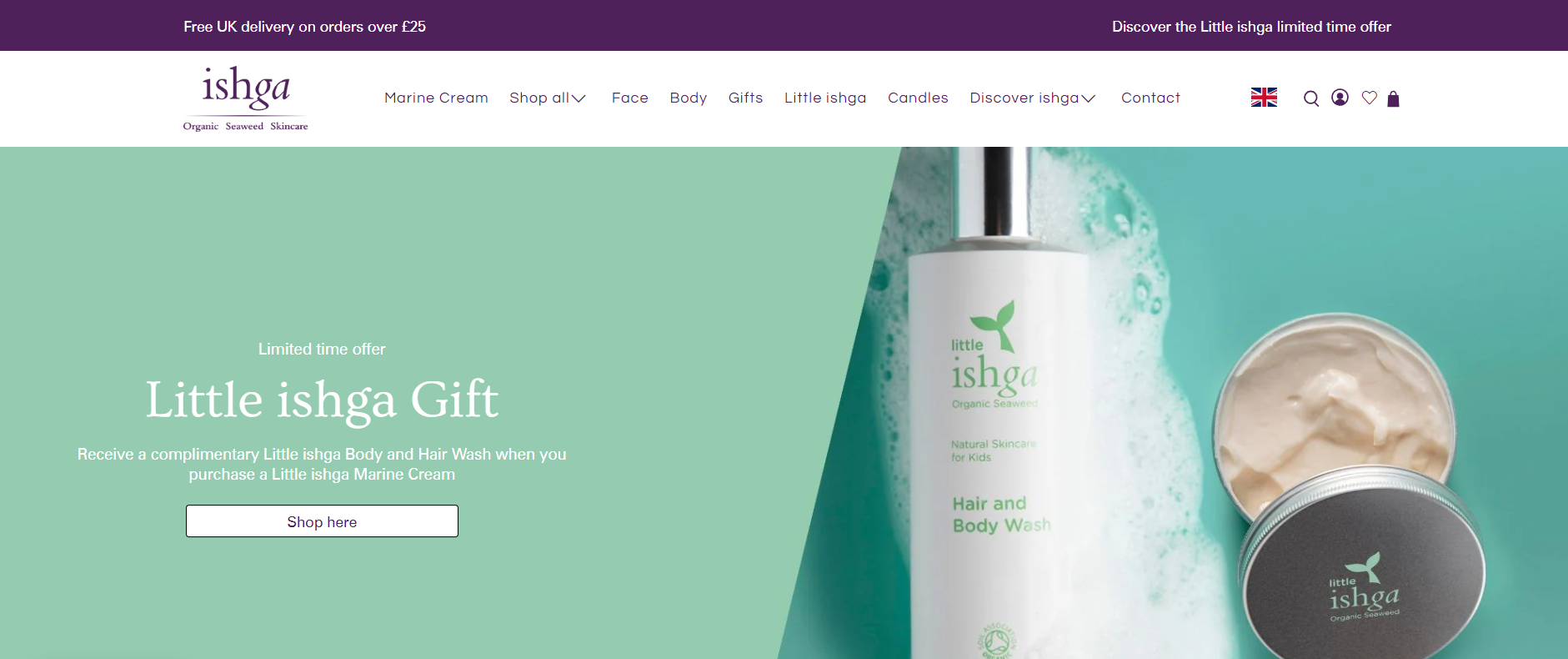
4. Conduct keyword research
Of all the ways to test demand for your product, keyword research is one of the most valuable. The search engine optimization (SEO) strategy can be used to find out if people are searching for your product, or something similar.
Start by identifying keywords connected to your e-commerce niche. This is where tools like Semrush and Ahrefs come in handy. As you go, create a topic map to group keywords into categories. For example, topics for an artisanal coffee subscription service might include “single-origin coffee”, “artisan coffee subscription”, and “coffee brewing techniques.” Under each of these topics would be keywords relevant to each topic.
Here's what we mean:
- Topic: Single-origin coffee
Keywords: Ethiopian single-origin coffee, Colombian single-origin coffee, best single-origin coffee beans, single-origin coffee subscription - Topic: Coffee brewing techniques
Keywords: pour-over coffee method, French press brewing guide, espresso machine tips, cold brew coffee recipe
This methodological approach helps to organize your content strategy and generate specific keywords that attract your target audience while ensuring all content is relevant and supports your niche product.
At the same time, you can see how often keywords are searched for. Is there a large interest, growing enthusiasm, or next to nothing? There’s no point launching an e-commerce website around a niche with next to no interest.
For example, there are 22,200 searches per month on Google for “cold brew coffee recipe”, but only 20 for “espresso machine tips”. These are the types of numbers you need to know first!
5. Create content that attracts your niche audience
Once your keyword research is complete, you can start to plan the architecture of your website, as well as the content you’ll need – such as blog posts, guides, and FAQs. Organically incorporating keywords will improve online visibility and help your content rank on Google.
Unsurprisingly, the more specific your niche, the more visible your content is on search platforms like Google. Ranking high for keywords like “handmade jewelry” will be tough but a more niche market like “handmade birthstone bracelets” can be significantly easier.
Featured everywhere from Marie Claire to Men’s Health, functional mushroom brand Spacegoods deep dives into the blend of ingredients in their products. The more niche-specific detail you can give, the happier Google will be. The page not only engages consumers and provides a wealth of information but also helps boost the company’s search engine ranking.
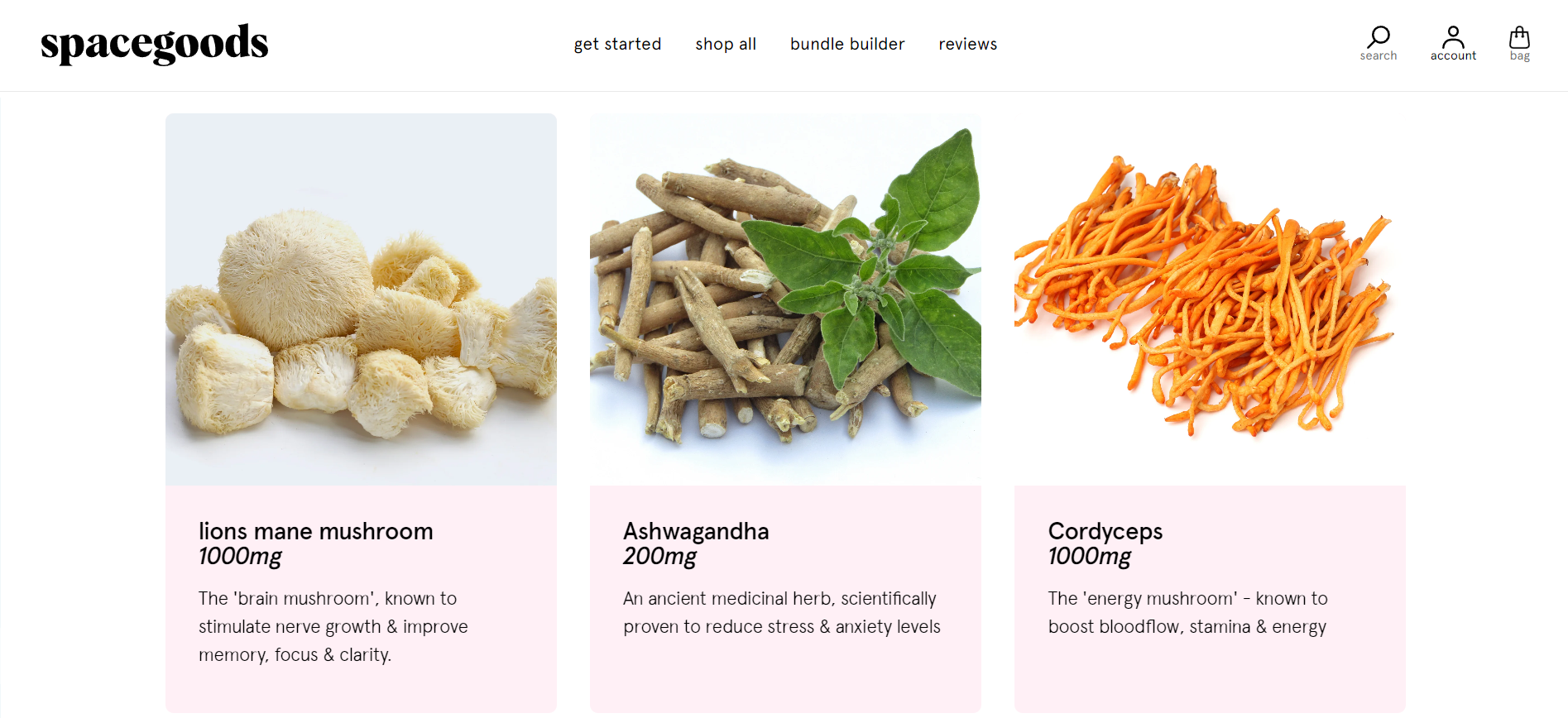
6. Research the competition
Unless you’re extremely creative, you’ll likely run into competitors that have a similar product when selling your niche product. Don’t lose momentum though. There are ways to set your product apart. Researching your competitors can help you identify ways to differentiate your product and make it even more niche.
For instance, let’s say your direct competitor is a women’s swimwear brand that sells bikinis made from recycled plastic bottles. It’s successful but reviews mention the products only come in standard sizes and colors are limited. You can then use this information to your competitive advantage and launch a women’s swimwear brand that sells bikinis made from a similar eco-friendly material, with a larger variety of sizes and colors.
Top tip: If you manage to find a niche with zero competitors, be careful. It’s possible that there isn’t an opportunity here.
7. Set the right price
Optimizing the price of your product is critical for any business, ecommerce niches included. The good news is that finding the sweet spot is much easier when targeting a niche. Analyzing your competition is a good place to start. If you notice similar price points, consider exploring ways to offer the same product at a lower cost.
Alternatively, interpret monotonous pricing as an opportunity to launch a higher-quality, more expensive product – or a tiered membership pricing structure.
Healthy competition indicates that demand is there and there’s potentially room for improvement.
8. Build a strong brand identity
A strong brand identity helps any business succeed and niche markets are no exception. We’re talking about an eye-catching logo, consistent colors and visual elements, and a distinct brand voice that resonates with your target audience.
Take Glossier for example. Counter to the complex offerings of other skincare and makeup brands, they strive to deliver simple products and simple communication. This is reflected in their simple yet bold branding.

9. Leverage social media marketing
Social media platforms like Facebook, Instagram, and X collect a huge amount of information about users. This is absurdly useful when it comes to marketing.
By creating engaging content that engages your target audience and then using social media platforms to strategically distribute your message, you can drastically increase the visibility of your ecommerce business.
10. Offer excellent customer service
Retail trends may be changing but nothing replaces good old-fashioned customer service. No matter what your product is, underpinning your ecommerce business with exceptional customer service will not only set your business apart from competitors but generate repeat business and valuable word-of-mouth marketing.
We’re talking fast and helpful responses to customer inquiries, easy returns and exchanges, and a personalized shopping experience.
The Most Profitable Ecommerce Niches for 2024
By now, you should have a good understanding of the 10 key steps needed to set up a successful niche ecommerce business. All that’s left to do now is find your niche.
Here are our top picks of 2024 to get you inspired.
Eco-friendly products
News flash: sustainability is COOL. Global issues like climate change and plastic pollution are driving demand for eco-friendly products and megabrands like Tesla, Whole Foods, and IKEA aren’t the only ones cashing in.
There’s a huge market for sustainable alternatives to traditional items, like beeswax food wraps, reusable silicone food storage bags, biodegradable phone cases, compostable audio accessories, swimwear made from recycled ocean plastics, and compostable bamboo toothbrushes.
Think consumers don’t want to pay more? Think again. A recent survey confirmed almost 60% of Gen Z consumers prefer to buy environmentally sustainable products.
Bulldog Skincare is one of many barking-mad success stories. Founded by British entrepreneur Simon Duffy, the brand sells sustainably packaged men’s grooming products made with natural ingredients. This is an interesting one as Bulldog doesn’t just target the rapidly growing men's skincare products market, which is set to be worth a huge £13 billion by 2026. It goes one step further and finds its niche with eco-conscious men who value natural ingredients.
Market research and audience testing were critical to the success of Bulldog Skincare, with the website revealing that “years of painstaking product research, design, and development” were channeled into the brand before Bulldog made its debut on the shelves of Sainsbury’s supermarket.
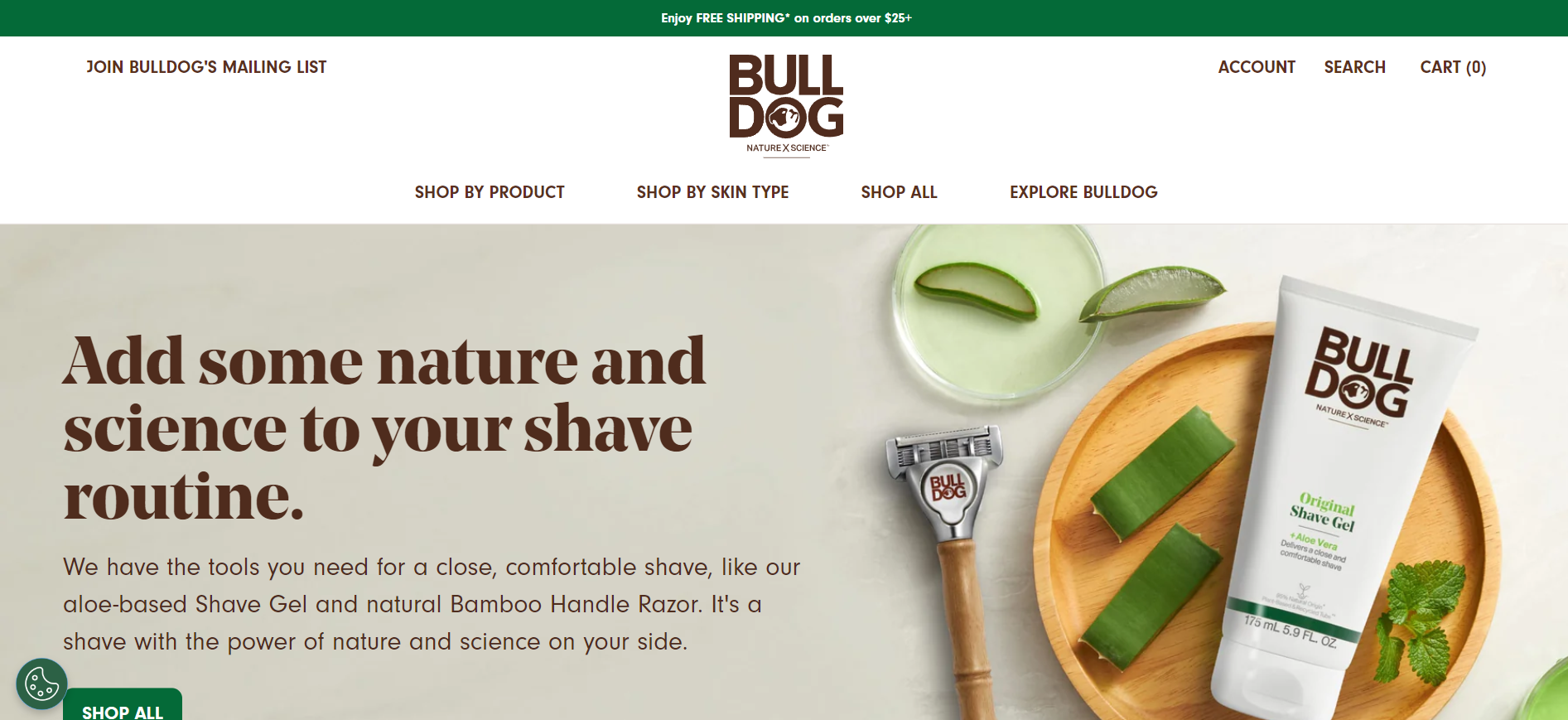
Success stories and fresh ideas to get you inspired
- Sustainable fashion: Organic cotton loungewear, shirts made with reclaimed wool, hemp clothing, swimwear made from recycled ocean plastics
- Zero-waste household items: Reusable silicone food storage bags, compostable kitchen sponges
- Biodegradable personal care products: Compostable bamboo toothbrushes, compostable dental floss made from natural silk or plant-based materials, solid shampoo bars, sustainable body scrubs
Pet care and accessories
Pet owners love to splurge on their fur babies and the sentiment represents lucrative opportunities for e-commerce sellers. For example, the organic pet food niche is predicted to grow at a CAGR (compound annual growth rate) of 5% between 2024 and 2032.
Yes, it’s a competitive market, but as Tru Earth CEO Brad Liski pointed out, there are always ways to do better and make your product stand out.
For example, combining the artisanal, small-batch niche (which champions quality ingredients, traditional methods, attractive packaging, and a high level of care during the production process) with the organic niche (which focuses on the origins and safety of the ingredients) could help carve out a market for your product.
Success stories and fresh ideas to get you inspired
- Eco-friendly pet accessories: Hemp-based dog collars
- Customized pet food: Grain-free diet tailored to specific breeds
- Pet health monitoring: Smart collars with GPS tracking
Golf gear
Golf is enjoying a renaissance, with the sport no longer viewed as a hobby for older, retired men. The younger demographic is swinging clubs and according to Statista, the trend will generate approximately $25 billion in revenue for the gold equipment market in 2024. By 2028 the market will enjoy an impressive annual growth rate of 5.63%.
Demand for golf clubs will inevitably contribute to these figures but there are also opportunities for niche ecommerce businesses who want a share of the profits. Golfers are always aiming to improve which could make wearable devices designed to enhance game strategy and performance a great e-commerce niche in 2024.
Unsurprisingly, apparel is another niche to target. Industry disruptor Asher has had huge success filling a gap in the market for high-quality golf gloves with style. The brand’s catchy tagline – “a healthy lack of respect for the mundane” – paired with aggressive social media marketing and a genuinely desirable product have helped the brand explode over recent years.

Men aren’t the only target audience, with a healthy market for women’s golf equipment and accessories also emerging. The growing popularity of golf, especially among the younger demographic, also means there’s demand for affordable and entry-level products catered to beginners and casual players.
Success stories and fresh ideas to get you inspired
- Practical golf accessories: Stylish covers for drivers, woods and putters, golf bag organizers
- Personalized products: Customizable golf balls with names, logos, or special messages, themed markers for identifying ball positions on the green
- Novelty golf-themed products and gifts: Mugs, socks, golf shirts, etc.
Online learning
The pandemic forced workforces to decentralize and as well as helping to foster better work/life balances, the shift online bolstered the global e-learning industry. The sector is growing at a rapid pace and is predicted to be worth $325 billion by 2025 and potentially $1 trillion by 2028. Academic learning isn’t the only hot niche, with 90% of corporations planning to use online education for employee upskilling.
Within the online learning niche, there are many sub-niches with potential, including mobile learning, which is on track to surpass $80 billion by 2027. Microlearning, a model that’s supposedly 17% more effective than traditional learning, is another sub-niche worth exploring.
Recommerce
Of all the ecommerce niches set to emerge in 2024, recommerce is one of the most exciting. Short for reverse commerce, the business model involves buying and selling pre-owned items. Theoretically, recommerce works within any niche. However, luxury items account for a particularly large share of the market. Think designer clothing, handbags, shoes, and jewelry. Bolstered by the pandemic, the market for second-hand fashion is enormous and expected to grow by more than 125% by 2026. By this point, global sales will be worth a staggering $200 billion.
Buying and selling second-hand items is by no means a new concept but it is set to gain traction in 2024. The great thing about recommerce? It doesn’t just appeal to bargain hunters. It also has a sustainable and eco-friendly edge which can be played up when building your business.
Fashion is a proven winner in the recommerce niche but to really stand out, consider focusing on a sub-category. For example, toys and kid’s products are trending in the recommerce sector.
What are some more sub-niches gaining serious momentum? Sports cards, concert tickets (hello Taylor Swift’s The Eras Tour), vinyl records, Lego sets, Pokémon, sneakers, and more.
GFNF, an all-in-one premium reselling community launched on Discord, plays into the recommerce movement. Created for sellers, the community offers exclusive alerts, tools, and educational materials to members looking to ramp up their recommerce businesses.

Print-on-demand (POD)
POD is another niche that’s by no means reinventing the wheel but enjoys enduring popularity. Just look at the numbers: the industry is projected to be worth $48.4 billion by 2032 and boasts a CAGR of 22.7%. The constant demand for customized products that reflect the individuality of consumers is what fuels this highly profitable sector. For sellers, eliminating the need for large inventories is a massive benefit. This keeps stock investment costs low and eliminates waste.
Success stories and fresh ideas to get you inspired
- Eco-friendly apparel: T-shirts, hoodies, socks, and tote bags printed on sustainable fabrics with eco-friendly inks
- Niche graphic tees: T-shirts with niche-specific designs like vintage illustrations, pop culture references, or hobby-inspired graphics
- Personalized home décor: Wall art, pillows, and blankets customized with personal photos or designs
- Custom baby clothing: Onesies, bibs, and baby blankets with personalized prints or names
- Novelty pet items. Custom prints of pets on products like pillows, blankets, and wall art
Health and wellness
When it comes to longevity it’s hard to compete with the health and wellness niche. The global sector has an astounding CAGR of 5.1% from 2023 to 2033 and is expected to climb to a value of almost $9 billion within a decade.
Consumers are clearly more than happy to invest in themselves, which means all you have to do is find a niche.
Success stories and fresh ideas to get you inspired
- Functional mushrooms: Lion’s Mane brain health capsules, reishi coffee, cordyceps tinctures
- Organic skincare: Seaweed-infused facial serums
- Natural supplements: Plant-based vitamins and mineral supplements designed to support various health goals, for example boosting the immune system, improving energy levels, or tackling allergies
- Mental wellness apps: Mobile apps offering guided meditation, stress management techniques, and mental health resources
- Online fitness coaching: Virtual coaching sessions, and personalized workout plans curated by professional trainers to meet individual fitness goals
Babies and kids
Did you know that every year the world welcomes approximately 140 million babies?
These little bundles of joy don’t just delight their parents, they represent a truly gargantuan e-commerce niche opportunity. With a winning niche, selling baby products can be a foolproof way to make money online.
Success stories and fresh ideas to get you inspired
- Eco-friendly baby products: Organic cotton cloth diapers
- Educational toys: Montessori wooden puzzles
- Customizable children’s clothing: Name-embroidered pajamas
Digital products
From Amazon to Etsy, online platforms have revolutionized ecommerce. These giants make it easy to target customers and move a huge inventory of products but there’s one major drawback – the focus is on physical products.
What platforms like Amazon and Etsy fail to address is that digital products are without question one of the most promising ecommerce niches of 2024. Digital products can be anything from SaaS, to downloadable worksheets, to ebooks - and even online communities.
Here are some examples of communities:
Who says the house always wins? With access to communities like Beat the Books, members can sharpen their sports betting edge and make picks based on the slips and insights of professional sports consultants, not hunches or gut feelings. This community is one of the best-selling products on Whop, proving the market for sports betting is HUGE.
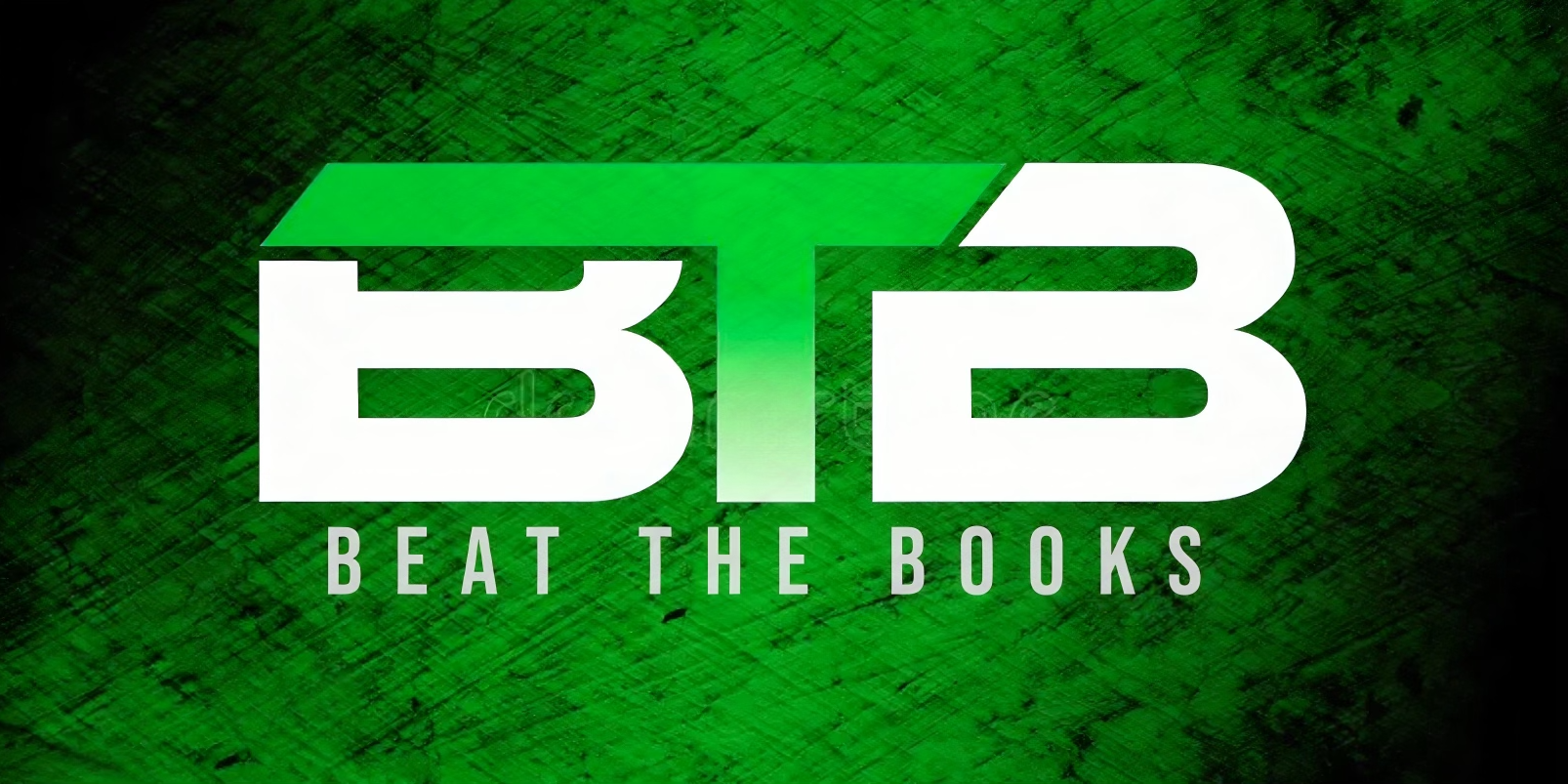
Joke, aka the founder of Beat the Books, saw an opportunity and went from casual bet-placer to CEO of one of the internet’s most popular sports betting communities. Using Whop, he successfully monetized his personal interest in sports betting.
Another example is Media Metas. Media Metas is a subscription-based service aimed at individuals looking to profit from social media platforms like TikTok and YouTube. For $40 a month, subscribers receive access to algorithm insights, viral content strategies, and professional guidance through a dedicated Discord channel. The service includes monthly calls, daily tips, and an active community for support. Media Metas promises substantial growth potential, with some users achieving significant viewership and income gains by applying the strategies provided.
Here are three examples of other digital products:
Trading with Easy Algo
Trading isn’t easy, which means there’s a huge market for insider tips, tricks, and indicators. Tools like Easy Algo equip wannabee traders with the price action leading indicators they need to wheel and deal like the 1%. Extras like access to an automated bot, top coin scanner APP, weekly live training sessions, and hands-on community support have helped make Easy Algo one of the top-rated trading tools on Whop.
Sneaky Sneaker Bot
Turns out, sneakers aren’t just for sports. They can make you a ton of profit if you can get your hands on the right pairs. This is where game-changing tools like NikeShoeBot step up. Marketed as the ‘Ultimate All-In-One Sneaker Bot’, the tool has a proven track record of scoring exclusive, new-release sneakers at retail price. The all-in-one bot uses cutting-edge technology to trawl through a range of retail sites in double time, making it a must-have tool for any sneakerhead.
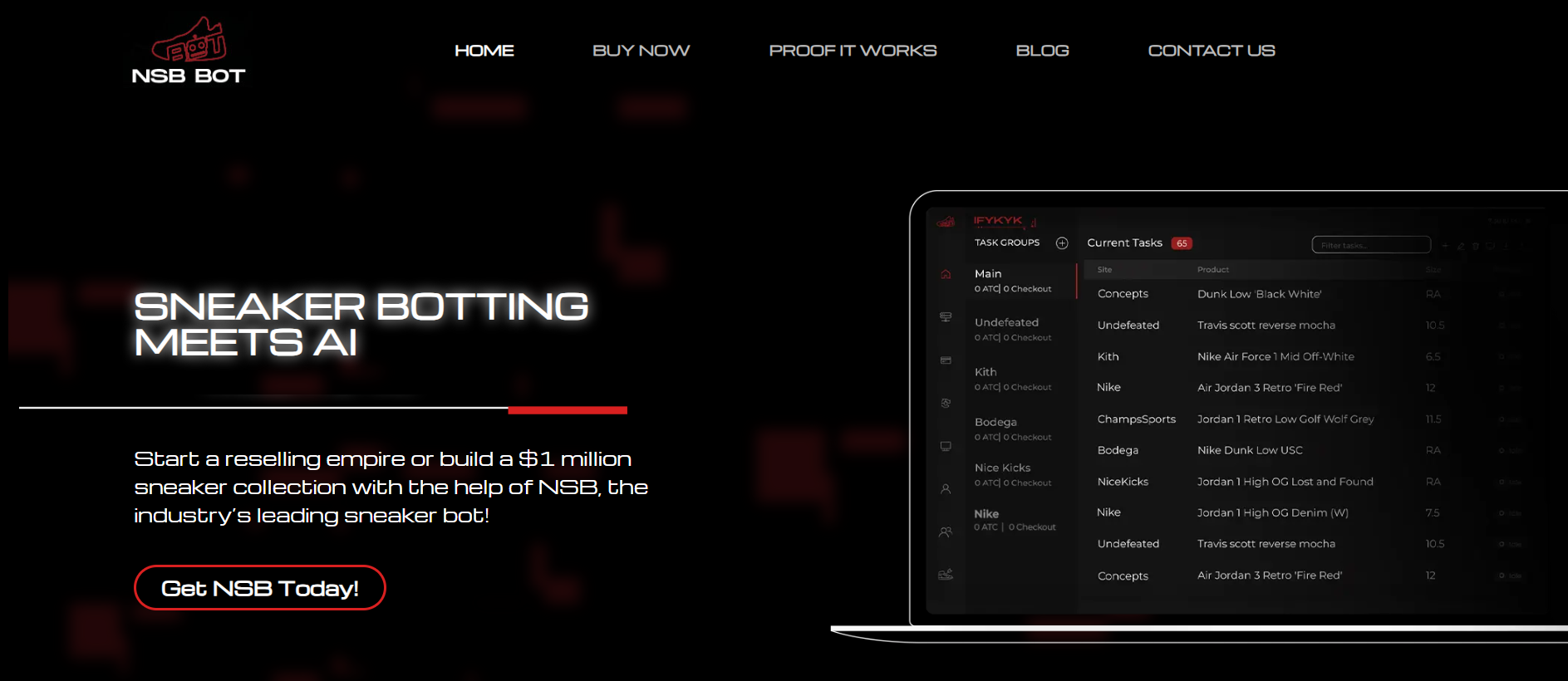
Email management
Most people stop at just one email address. Not SolarTools. Created for users who need to manage multiple online identities, the software streamlines the creation and management of email accounts. Demand for these types of tools is huge, especially when it comes to automated activities like scoring Ticketmaster codes, bulk registering for competitions, and generating Nike accounts to secure the latest sneaker drops.
What’s Driving the Digital Products Ecommerce Niche?
As more people turn to the internet for their needs, the digital product industry is poised to experience rapid growth. For sellers, this represents a lucrative opportunity that can no longer be ignored.
Here’s a rundown of what makes digital products one of the most exciting ecommerce niches of 2024:
Minimal overheads
Unlike physical products, where expenses like manufacturing, warehousing, inventory management, and shipping quickly add up, digital products slash the overhead costs associated with ecommerce. Top-selling products that offer genuine value to customers can be developed, marketed, and sold from your kitchen table if that’s the only workspace available to you.
Initial investment costs are low, which breaks down common barriers to entry. The ongoing expenses of digital products are also significantly lower compared to physical products. Keep the extra cash as profit or channel it back into your business and ramp up areas like marketing and product development.
Instant delivery
Modern consumers expect immediate access to their purchases. It plays on the innate human desire for instant gratification and is the definitive reason why Amazon’s Prime FREE Same-Day and Next-Day Delivery have enjoyed such incredible success.
Unless you’re Jeff Bezos, offering free same or next-day delivery is hard, not to mention expensive. Enter digital products. Subscription-based communities and purpose-built tools like the ones sold on Whop, as well as other digital products like e-books, online courses, and software, allow you to give customers instant access to their purchases.
Scalability
Digital products offer unmatched scalability. Instead of stalling due to production costs, inventory issues, and shipping logistics, the only thing limiting the growth of your digital product business is bandwidth. Unlike physical products that need to be shipped out individually, a digital product can be sold again and again to a limitless number of customers, without incurring extra costs. This scalability represents opportunities for rapid growth within the digital products e-commerce niche.
Customization
Another appealing feature of digital products is the ease of customization and personalization. Unlike selling physical products, where costs skyrocket as soon as you start diversifying, digital products can be easily tweaked to meet the specific needs and preferences of different audiences. TikTok Automation Academy is an example of a digital product that nails the personalization angle. The creators appreciate that every TikTok user is unique and have created a suite of tools and courses designed to adapt to different content styles, goals, and target audiences. There are no additional costs to the academy creators or users, making it a win-win.
Eco-friendly
As covered earlier, eco-friendly products are one of the fastest-growing ecommerce niches of 2024. Yes, the demand for physical products is huge. However, the eco-friendly nature of digital products can also be played up as a selling point.
Diverse market opportunities
This is a BIG one. The market for digital products is incredibly diverse and covers a huge range of industries. Think ecommerce tools to optimize sales, social media monetization courses, sports betting insights, high-quality gaming peripherals, personal finance resources, and more. We’re not exaggerating when we say you can “sell literally anything” on Whop. When it comes to finding an e-commerce niche that aligns with your passions and expertise, the diversity of the digital product market is a huge benefit.
Passive income potential
What’s not to love about making money while you sleep?
Sure, processes like manufacturing, inventory management, and shipping associated with selling physical products can be automated to some extent. But the tangible nature of physical products means passive income potential can only go so far. In comparison, once automated systems are in place for the marketing and delivery of digital products, there’s enormous potential to generate revenue with minimal ongoing effort. If you’re dreaming of financial stability and personal freedom, digital products can be an exciting passive income stream.
Why Choose Whop?
Looking for a simple, flexible, and scalable platform to sell digital products online?
From Udemy and Skillshare to Teachable and Thinkific, there are plenty of platforms available for you to host and sell digital products. However, when it comes to community building, nothing compares to Whop.
Created with group memberships in mind, the platform helps you sell your content but features purpose-built tools to help you build and grow your ecommerce business. Simply choose from a subscription model or a simple one-off fee, then streamline everything from memberships and community access to algorithm, course, and app downloads.
We replace headache-inducing subscription tiers and scaling transaction fees with a 3% flat fee on every sale that you make. It’s simple, transparent, and designed to help you succeed, not hold you back.
Frequently Asked Questions
What’s the difference between a niche and a sub-niche?
A niche is part of an overall market. Organic skincare, for instance, is a niche within the skincare market. A sub-niche, also known as a micro-niche, goes one better.
Organic, honey-infused skincare, perhaps? Or how about genderless, multipurpose products designed to make beauty accessible to everyone, regardless of identity or experience? Yeah, it’s a thing!
What is the fastest-growing ecommerce niche in 2024?
Some of the fastest-growing niches of 2024 include eco-friendly and sustainable products. Digital products are also set to be HUGE in 2024.
How do I find an ecommerce niche with low competition?
The best way to do this is to find a product in an e-commerce niche and then narrow that down further by finding an e-commerce sub-niche. This way you know there’s demand for what you’re trying to sell but you also stand a chance of differentiating yourself.
How do I find a profitable ecommerce niche?
The 10 steps outlined above should help give you a good starting point for finding a profitable ecommerce niche. In short, they are:
- Ride the coattails of the latest trends
- Embrace your interests
- Test your audience
- Conduct keyword research
- Create content that attracts your niche audience
- Research the competition
- Set the right price
- Build a strong brand identity
- Leverage social media marketing
- Offer excellent customer service
What are some common ecommerce mistakes?
Many online entrepreneurs make the e-commerce blunder of not truly comprehending their product or target audience. Similarly, opting for the wrong platform for your product will limit your success.





![57 Best Digital Products to Sell [2024]](/blog/content/images/size/w600/2024/02/Best-Digital-Products-to-Sell--2024---1-.webp)